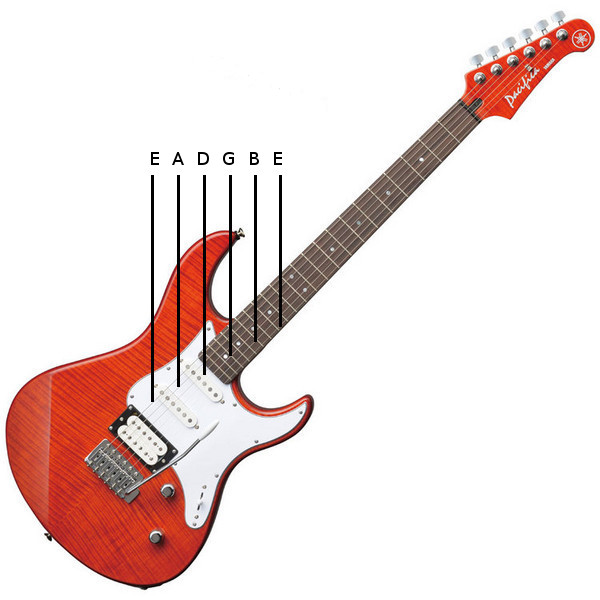

Once you have Es, Ds, and Cs down things should start falling into place more quickly. Start playing on a single string first, and then look for ways to play the same thing on 2 neighbouring strings. Now when you have several notes to play with, you can try and practice small scale patterns across the neck. It might be premature to talk about it in detail here, just know that it is possible to play exactly the same note in different parts of the fretboard, and start noticing patterns like this. You might have already discovered that some notes sound exactly the same while others sound an octave higher or lower. It will make it so much easier to master the fretboard, especially if you can relate them to music theory (C and E form a major 3rd interval). Notice and memorize little patterns like this. there are Cs on both 1st and 6th strings on 8th fret (between 2 markers)Īlso notice how close C and E are when you look at the neighbouring strings.there is a C on the 3rd string 5th right on the marker there.there is a C on the 2nd string 1st fret (right next to the nut).Remember to relate notes to the fretboard markers as well as the nut and other notes you learned. There is not much new to say here about memorizing C notes. Here is a fretboard diagram with Es and Ds: Just move 2 frets down from any Es you already know. You shouldn’t even need to look at the chart to find Ds. Once you memorized your Es, I’d suggest you move to Ds next. Continue with DsĮs should become a nice anchoring point for learning other notes on the fretboard. You will discover that fretboard is an exciting place and is not that weird after all. Print out a dozen of blank guitar fretboard diagrams and use them to draw the notes you learn! Later on you can use these to study note patterns on individual strings, groups of string, different positions, etc. Once you learn all the notes up to 12th fret it will be very easy for you to move beyond it as the patterns of notes repeats itself all the way to the end of the neck. If you like a divide and conquer approach, I’d suggest you focus on the first half of the neck (up to 12th fret). You will easily hear whether you are playing the right notes or not (make sure your guitar is tuned properly before you start!). All Es you play should sound like that (some will sound exactly the same and some in a different octave). Use an open E string as a reference sound. Play an open 1st or 6th string and then locate and play all the other Es across the neck one by one. Take some time to really drill note E into your memory visually. It helps a lot that most of the Es fall right on the frets with markers. Sometimes the dots are placed right on the fretboard as well as on the upper part of the guitar neck. See how notes relate to the fretboard markers (those little dots on your guitar). So there is that to simplify the learning too! Notes on the 12th fret are the same as the open string notes just one octave higher. So that already simplifies the task of memorizing the fretboard! Yes, low and high strings on the guitar are both Es (just different octaves). There are couple things that you should immediately notice looking at the diagram above. Let’s look at a fretboard diagram showing E note across the fretboard to see why:įretboard diagram showing all E notes on the guitar

I find that the best way to start learning the fretboard is from the note E. You will need to practice more to really drill each note into your long-term memory and memorize the fretboard cold. To make the best use of your 10 minutes, I’d suggest you spend them to read through this article (preferably with a guitar in your hands) and understand the principles of how the notes are laid out and how they relate to one another. It seems a bit random, but there is a good reason for learning the notes in this particular order. You might be tempted to start learning the fretboard from note C, or A… but I find that the best way to learn is in this order:

We can divide and conquer! This is by far the best strategy to learn the whole fretboard. Learning notes on the fretboard might seem like a dreadful task as the fretboard might looks a lot like a multiplication table that you have to memorize row by row and item by item…ĭon’t worry you won’t have to learn the fretboard one string and one fret a time… that’s boring, timeconsuing, and very inefficient way to learn.
GUITAR STRINGS NOTES HOW TO
Fretboard with diatonic notes, the notes that you should learn first!Īs you can see it does not look that intimidating! There are only 7 notes to learn, which is definitely doable in 10 minutes! Let’s get into it! How to learn guitar fretboard notes quickly


 0 kommentar(er)
0 kommentar(er)
